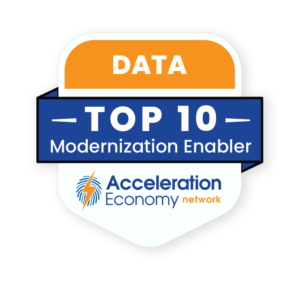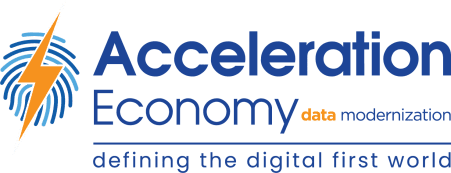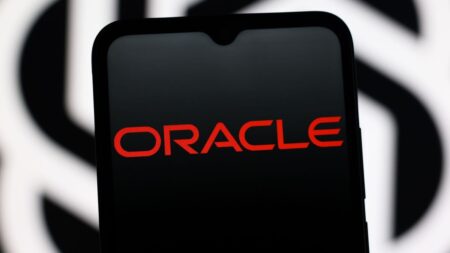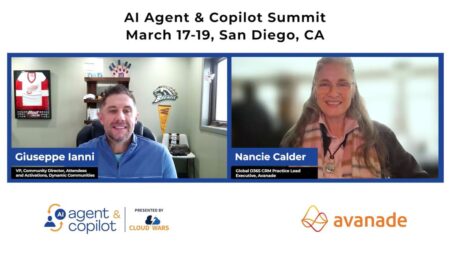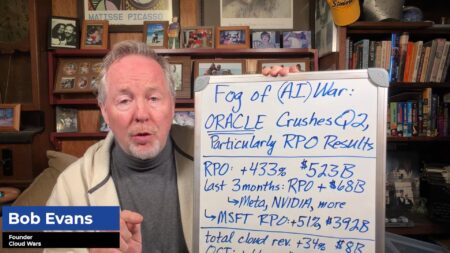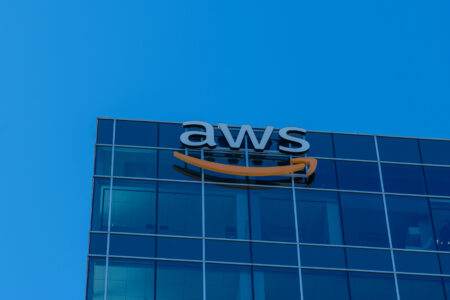
In this analyst roundtable, John Siefert is joined by Acceleration Economy analysts Tony Uphoff, 4X CEO, Wayne Sadin, CIO/CDO/CTO, Chris Hughes, CISO, and Chief Data Officer John Muehling. In this roundtable, the analysts discuss the cultural connection and collaboration among C-level executives — specifically among Chief Information Security Officers (CISOs), Chief Information Officers (CIOs), and Chief Data Officers (CDOs).
Which companies are the most important vendors in data? Click here to see the Acceleration Economy Top 10 Data Modernization Short List, as selected by our expert team of practitioner-analysts
Highlights
01:14 — John asks Tony, who recently published an analysis on what it means to be a data-driven organization, to kick off the conversation. He asks how being a data-driven organization can be used to “prioritize teams and start to execute” that strategy.
01:26 — Tony says that when he wrote this analysis it got a lot of engagement, as he was talking with peers who described wanting to work on creating a data-driven organization. Although organizations are “awash” with data, the reality for many companies is that there is no strategy to identify the “metrics that matter” within the data. He notes that the premise of this analysis was to emphasize that there must be a CEO leading responsibly in order to track all these data elements.
03:09 — Additionally, Tony highlights how the second “issue” of being a data-driven organization is that data siloes are, in addition to being a technical issue, a collaboration issue. He reiterates the need to identify the “metrics that matter” and for C-level executives to drive collaboration that breaks down data silos.
04:12 — The idea of access control and access grants that are enabled through data creates the ability to break down the silos, suggests John — this is critically important when trying to manage data governance.
04:36 — John reads a quote from an analysis Chris Hughes recently published, titled Why Effective Data Governance Relies on CDO-CISO Collaboration: “A core data governance challenge is breaking down data silos to ensure proper access control measures are included as silos come down. This includes understanding how the organization collects, creates, classifies, uses, and retains data across the organization. The CDO can use this information to improve the organization’s management and governance of data, while the CISO can use it to ensure appropriate security controls and measures are in place.”
John asks Chris to further describe the collaboration that is required between a CISO and CDO.
05:25 — Chris suggests that a foundational element of this collaboration between a CISO and CDO is communication. He adds that data silos are oftentimes a result of siloed communication within an organization. By breaking down these communication silos, CISOs can start to understand what CDOs need to do their jobs.
06:27 — John Muehling emphasizes Chris’ point in his analysis that data needs to be transformed to make it actionable for the business and to enable business outcomes. Working in an organization where data is siloed will only hinder the company’s progress. He notes that culture has become a critical factor in ensuring that teams collaborate.
08:10 — In his recent analysis, Wayne suggests that there are three prongs to enabling modern data governance. John asks him for his perspective as a CIO.
08:52 — Wayne explains that data has a lot of variation. He adds that most CEOs want data that has context — essentially “information.” He references “prong two” of his analysis, implementing modern (cloud) data tools, which enable organizations to manage their data. This leads to prong three: Combine data governance with zero trust. If you don’t know what you are protecting, how can you protect it?
11:24 — Wayne notes that something that is coming into this strategy is securing the data at the “data element level,” rather than the application level. John asks Chris how he is considering the security of data without hindering the ability to access it in a multi-cloud world.
12:33 — Chris notes the importance of considering the “attack surface management perspective,” which is why there is an increase in the use of data lakes, which is a single location from which data can be accessed.
13:15 — John agrees that in the world of data lakes, organizations and executives have flexibility and agility, as “structured and unstructured” data are mingled together. However, if zero trust frameworks aren’t applied to the data lake, there could be unwarranted access to different elements of data.
13:57 — Tony “picks on CEOs” and suggests that they are oftentimes blissfully ignorant about these risks. It is important for CEOs to understand application security, which is something he learned more about after having conversations with Chris and other security professionals. Regardless, data is the new “oil” and the fuel that is driving businesses.
15:37 — “With great data access comes great data responsibility,” says John. He asks the analysts for their final thoughts.
16:30 — Wayne says that the three roles — a CISO, CDO, and CIO — are connected at the hip and are making a common decision. He says “the first silo we have to break down is those three C-level positions.”
16:57 — Chris echoes Wayne’s point that when it comes to the end goal of these three positions, they are all working toward the shared business outcome. If these three positions “align and rally” toward the shared goal, the company will be on a more successful route.
17:17 — Tony adds that it is the CEO’s responsiblity to understand what the business is and in which direction to take it. Tony discourages CEOs from having one-on-one meetings with CISOs, CDOs, or CIOs, and focus instead on fostering collaborative meetings among the three positions.
18:18 — John Muehling suggests that “standards define or enable the environment for collaboration,” before adding that the “cultural element of it is so important.”
19:29 — In his closing thought, John Siefert suggests that collaboration is “really a decentralization of intelligence,” that enables us all to “ride the boat in the same direction.”
More data modernization insights:
Want more insights into all things data? Visit the Data Modernization channel:



